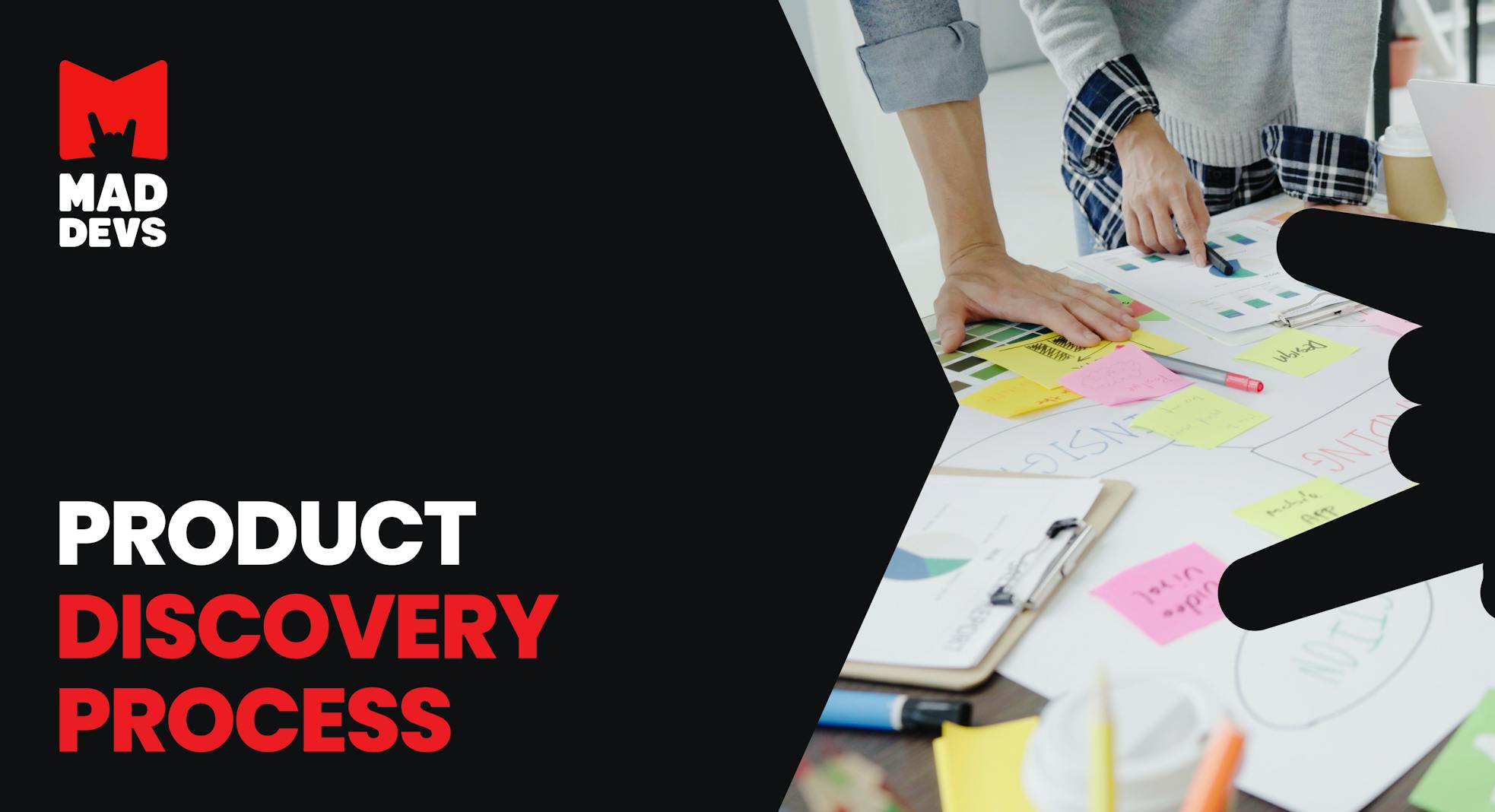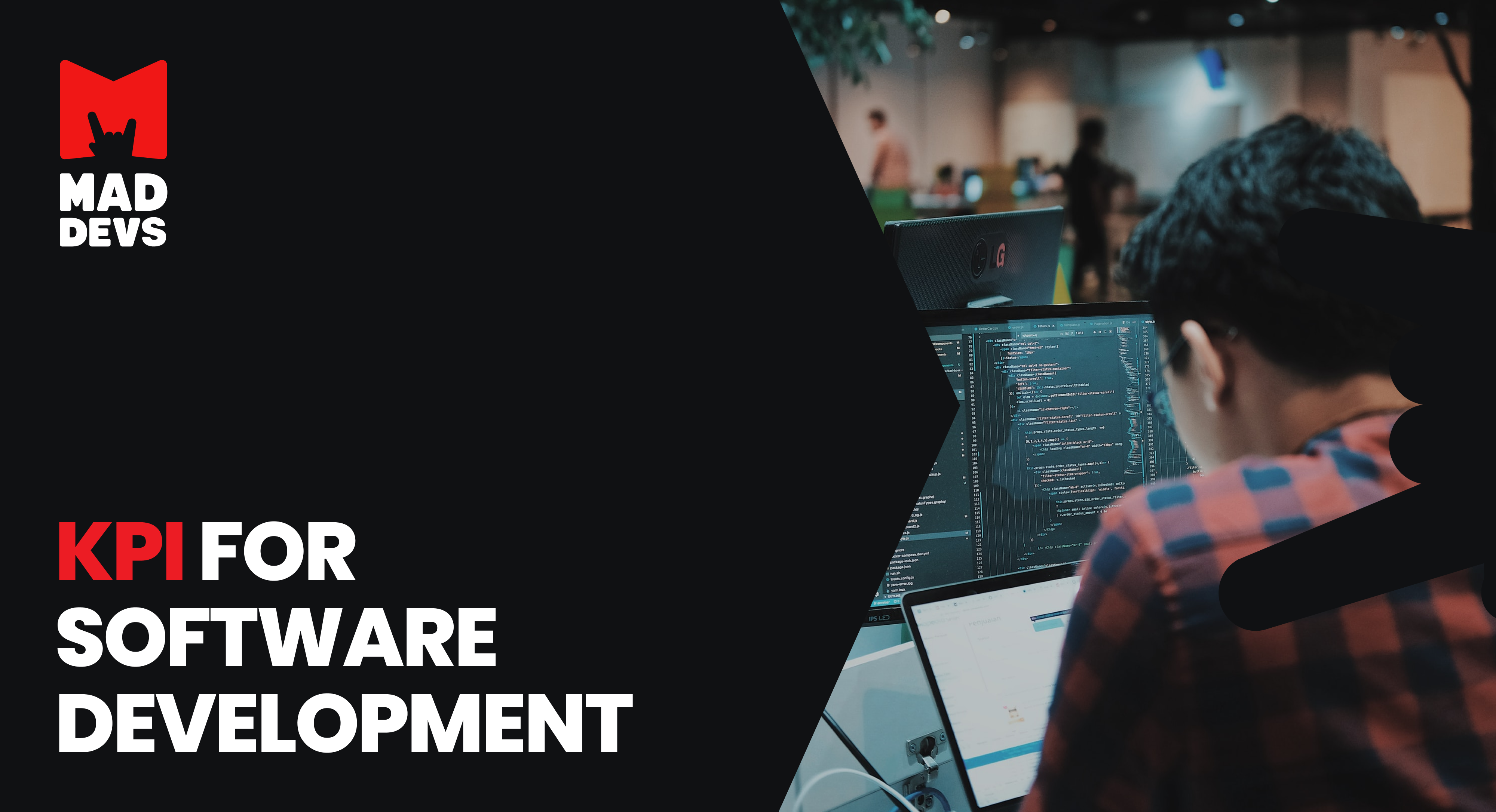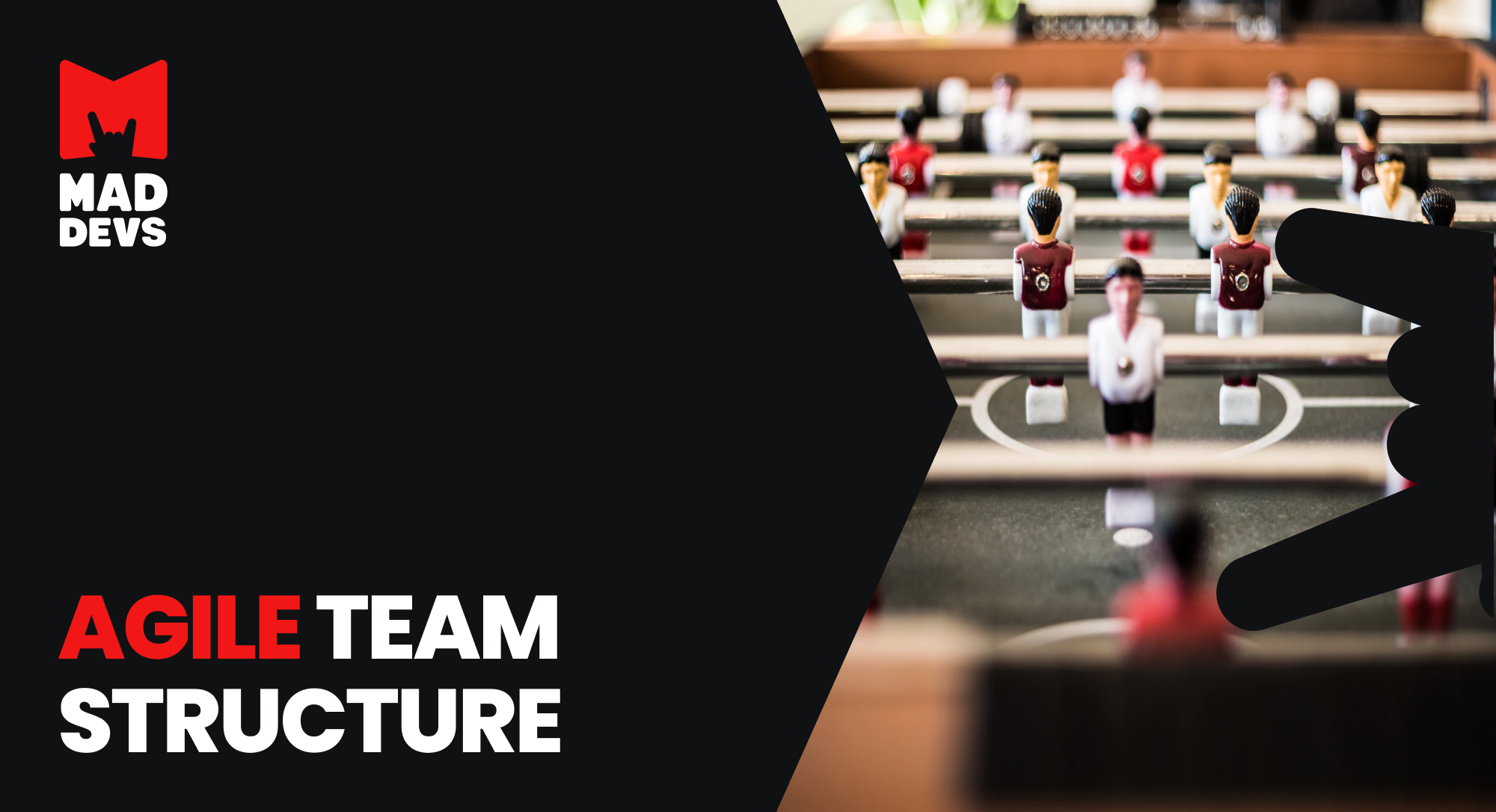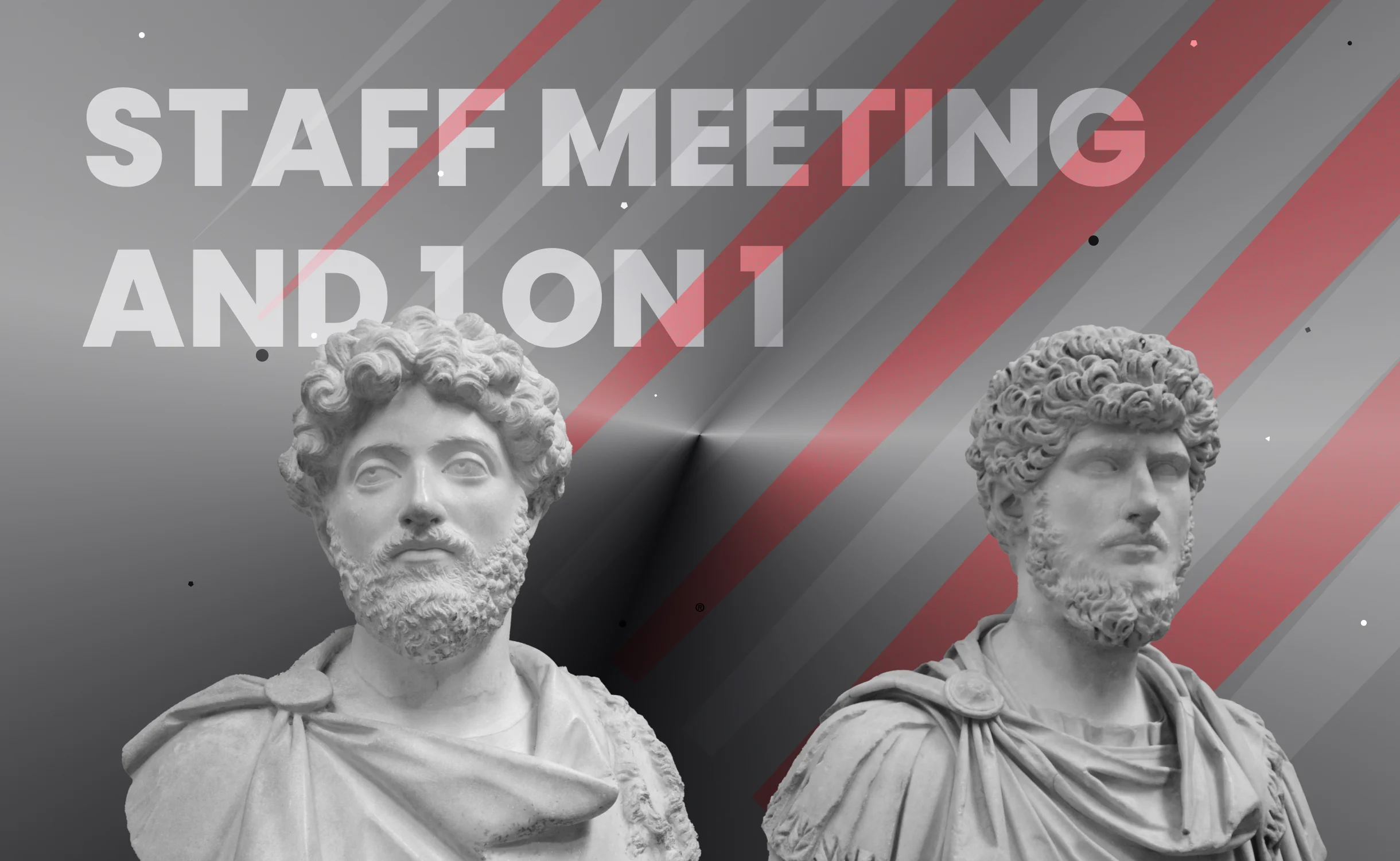Most of the time, 9 out of 10 new products fail the first encounter with real users. Why is it? On the courage of the "brilliant idea," after a quick study of competitors and a couple of focus groups with the target audience, the creators proceed to design the prototype. With sufficient funds, companies launch a product on the market, and it soon becomes apparent that something has gone wrong. All because they did not pay due attention to one important stage even before the development of the product.
Product discovery – the process of validating an idea about the market and future users and Product discovery process in the Agile team – the most popular method for the software product team.

What is product discovery?
Product discovery is a method of getting a deep understanding of your customers in order to develop products that fully meet their needs. It helps the team identify potential opportunities, develop products that are both valuable and feasible, and helps the company avoid wasting valuable resources on projects that nobody wants.
💡 Want to ensure that your new business starts on the right track? Write us, and we will help you identify market gaps and opportunities, which can help you make informed decisions about your product or service offerings and your overall business strategy.
The product discovery process started in the early 2000s as a response to the traditional product development cycle. To get to know about the evolution of modern product discovery, you can hear Teresa Torres, a product discovery coach:
So basically, the product discovery process has two distinct parts that involve identifying the right products (exploration) and building the necessary infrastructure to support them (validation.)
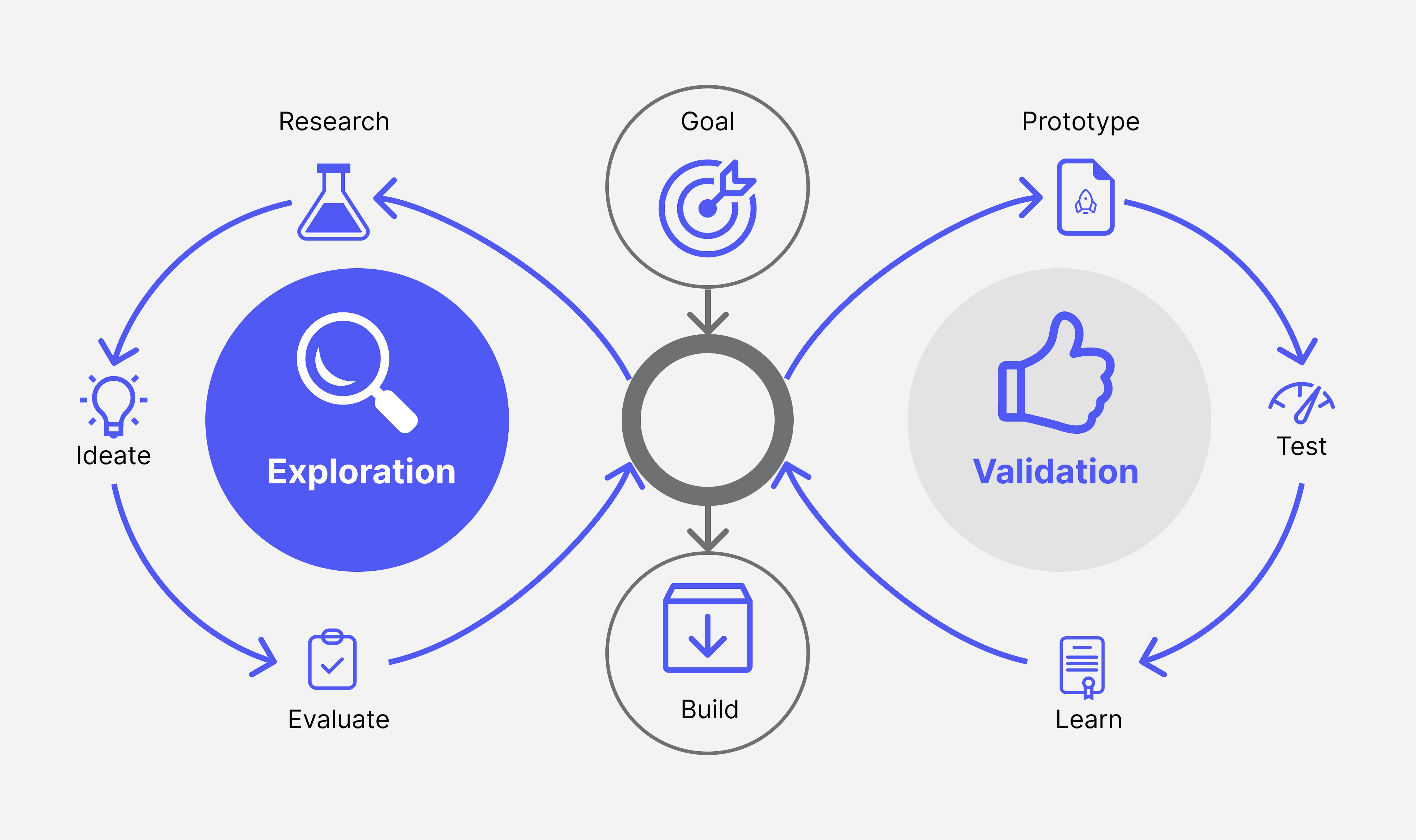
Two product discovery process parts
Exploration – this process involves various activities such as identifying potential issues, communicating with stakeholders, and evaluating existing products or services.
Validation – before the product is designed, validation is a set of activities that check the assumptions made during the exploratory stage. These activities are done with the help of data and customer feedback.
Having product discovery early in the development cycle helps the team select the right direction and vision. So product teams prioritize and build the best possible products.
To be effective, the discovery must be wide and independent of technology or solution. When teams perform on a product they have already decided to build, it is no longer a discovery, but, instead, it becomes a requirement-gathering exercise or a verification exercise where teams seek to confirm that their solution is the best.
Ideally, the product discovery process works in 3 spaces: problem, solution, and business. It helps to answer important questions that significantly affect the success of the product in the future. You can find the questions below:
| PROBLEM SPACE | SOLUTION SPACE | BUSINESS SPACE |
|---|---|---|
| What is the problem? | What do users dislike about the current solution? | What value will the product add to your business? |
| Who are the users facing it? | Who else has already solved the same problem? | Does the product align with your business goals? |
| How many people are facing it? | If many, why will users use your product? | Do we have a roadmap to build this product? |
| What are the demographics of target users? | If none, why is it so tough? | How can we monetize it? |
| How are they dealing with the problem at present? | Is it even feasible? | Are there any challenges in developing it? |
| What tools or features your users wish to have? | Why will customers use your product? | What will be the KPIs to monitor the success? |
| What value will it add to the user's lives? | What is going to be the cost of development? |
When do you need product discovery?
Product discovery is necessary when the team doesn't have a clear idea of what the product should be built for. Doing so could lead to the development of a flawed product.
There are several scenarios for implementing this process:
- If you are planning on launching a new product or service in a different country, then finding the right audience and competing against established players is often necessary.
- Before you start working on a new product, it's important to first identify the ideal customer segment and the ideal product design.
- When it comes to upgrading your product, it's important to find out what the new feature will solve for your users and the overall product experience.
Sometimes, companies combine their various systems and tools to create one more efficient and effective platform.
Common mistakes before product discovery
Product development teams often see "discovery" as just a process and misunderstand its role. It requires a user-centered, data-driven, and continuously evolving mindset to build products that solve real-world problems. Not paying attention to user problems can lead to the development of products that end up ruining the project.
Even if an outsourced company can help with product discovery, it's still important that all people involved stay involved throughout the entire process. Doing so helps ensure that the findings are actionable and the right solutions are identified. That’s why the product discovery should have a team composed of individuals from all parts of the organization who bring a unique perspective to the table.
So who are they – the people that are involved? Let's get a better understanding of the product team.
What is a product team?
A product team is typically composed of cross-functional teammates. Some of these responsibilities include product management, marketing, and user experience.
Here is a table with key players and their responsibilities:
| FUNCTION | RESPONSIBILITIES | ROLES |
|---|---|---|
| Product management |
|
|
| User experience (UX) |
|
|
| Product analytics |
|
|
| Product marketing |
|
|
Above are some of the most common organizational structures for product teams. But remember, there are no one-size-all solutions for product teams. Instead, team members can be arranged around a certain product or a certain line of business.
A well-defined product strategy and structure are crucial for product teams to collaborate effectively. Having a clear vision and strategy helps teams align with one another.
How do you make product discovery?
The product discovery process is organized into stages, and this framework follows a common path that most startups follow. Doing so allows teams to internalize the process and avoid repeating the same steps over and over again.
There are several essential stages:
1. Determining the goals and principles of creating a product.
It can be composed of the following:
- Founders' personal goals;
- Goals of a business or organization;
- Product principles.
Businesses often start by opening up to an opportunity or business problem they want to solve. This is a good starting point. However, it is even more important to make sure that the solution delivers the desired result, is valuable to the users, and can be delivered. These assumptions - especially those that pose the greatest risk to product success - are key to guiding research efforts. To do this, a fully balanced team works together to form a shared understanding of the motivations of the business, users, and technologies that make up the problem space.
This step is very important for further work. The process of discovering a product is quite exciting and can take you in unexpected directions quite quickly. Such basic agreements help to verify the current state with the original goals and, in case of deviation, correct the course.
The goals of the company and the principles of the product are the foundations of any venture. Having these goals can help avoid conflicts and dilute the idea.
2. Evaluating the capabilities of the product
This can be done by answering the questions of evaluating the capabilities of the product:
- What specific problem does the product solve? (value proposition)
- Who are we solving this problem for? (target market)
- How will we measure success? (business metrics)
- How big are the opportunities? (market size)
- What are the alternatives? (current competitors)
- Why is our product better suited to solve the problem? (our differences)
- Why is now the right time? (market window)
- How will we launch the product? (exit strategy)
- What factors are critical for success? (requirements and risks)
All of these answers can help you to have a clear vision of your product.
Ready to take your product to the next level? Contact us for a product discovery process to identify opportunities for growth and expansion.
3. Prioritize the key issue to be resolved
The discovery process will find various validated user issues and invalidate many others. Solving any of these problems can create value for the user and the business; however, this value will only be recognized once we provide a solution. Products often fail when they don't solve a real user problem, but they can also fail when the team building them tries to provide too many solutions. Prioritization is the best way to mitigate this risk. Unfortunately, prioritization can be difficult because issues are often intertwined, and our empathy for users tends to tempt us to take on the best we can. Ranking issues by their relative value to the business and users is a great way to start the decision-making process. A team that has shared experience in conducting interviews with stakeholders and users – and summarized this knowledge – is well placed to do the hard work of discussing this important aspect
4. Identifying key customers and users
Identification, description, and selection of key users and customers at each stage of development is an important part of the work on the vision and product, and it is useful to include the entire product team in this process if it is already assembled.
5. Conducting user research
The well-known and widely used methods for conducting user research are surveys and interviews.
An interview is a method that’s conducted to get to know a potential customer better – beliefs, attitude and experiences. It’s usually carried out by a one-to-one interview with users. Interview can be done online by video chat applications.
A survey is the most commonly used method of user research. It collects data about a person and their interests. Surveys are usually conducted online. Aside from conducting surveys, other forms of user research can also be utilized.
Common research methods:
Attitudinal research — to understand or analyze the attitude of the user. It focuses on performance and actions.
Behavioral research — to understand the behavior of the users. Can be done by interviewing people about product.
Quantitative research — refers to the process of collecting large amounts of data through surveys, questionnaires, and polling methods for analyzing numerical data for statistical analysis.
Qualitative research — involves collecting and analyzing non-numerical data (e.g., text, video, or audio) to understand concepts, opinions, or experiences. It can be used to gather in-depth insights into a problem or generate new ideas for research.
Sometimes only a small number of users are needed to identify trends. At this point, the team has likely seen and heard user comments that confirm and contradict their original beliefs. To avoid confirmation bias, it is important to step back from our personal experiences and take an objective look at the recordings made in each session. By reviewing all research data and synthesizing it into key ideas, patterns, and issues, you can determine if we have enough evidence to confirm our wildest guesses and avoid narrowly focusing only on findings that resonate with us personally.
Goals of this activity:
- Make sure there is a problem
- Find out how it is solved now
- Get ideas about your solution to a problem
6. Building a map of interaction with the product
Essentially, a user story map is a high-level, multi-dimensional requirements model that describes product usage scenarios. This tool is good for both feature design brainstorming and release scoping.
7. Prototyping
A prototype is a set of pictures that show the interface of your future app. It serves as a visual representation of the product's final design and navigation.
Even though it may look like a basic version, a prototype is not a final product and cannot be presented to actual users.
8. Choosing a minimum viable product (MVP)
At the output of the previous step, get an idea of the minimum set of functionality that will be valuable for delivery to the market. The minimum viable product is a kind of final app that doesn't have many features, doesn't have high code quality, and has a limited design. This version of the product allows teams to collect the most amount of validated learning about their customers.
If you wonder what it is like in practice, there are examples of famous brands that launched MVP, and it had huge success:
- Airbnb. When the founders of Airbnb decided to create a marketplace for short-term rental housing, they used their own apartments. They built a website and published photos of their property.
- Foursquare. Foursquare started as a one-feature app but quickly grew its user base. It wasn't until the company started adding features such as recommendations and city guides that it became a full-fledged product.
9. Testing
Testing helps determine if the proposed solution can actually solve the problem. Popular tools include customer interviews, product beta testing, and user testing.
The outcome of the product discovery process
The most important thing is this process is not just about validating an idea. It also helps gather important data that will support your product development.
As a result, you will get
- Clear problem statement
- Business value
- User personas
- User-needs statements
- User-journey maps
- Functionality features
- Working wireframes
Now let's look at product discovery in the Agile team.
Product discovery framework for Agile teams with Jira
The whole product discovery process is centered across cross-functional collaboration among product, design, and engineering. And these are applied to Agile principles.
Agile methods are usually utilized by software product teams. On the other hand, when working on a feature or an epic, the team has a clear idea of what they are going to deliver and what their value is. This helps them prioritize the most important parts of the project.
We at Mad Devs successfully use Agile method to implement our projects. Specifically, we have chosen Atlassian's Jira for efficient and transparent project management.
So, there are some tips to successfully incorporate product discovery in Agile.
Start with collaboration between the product manager, product designer/researcher, and engineers. Set some discovery sessions where the team could cooperate.
Stakeholders are the people who can provide key information that can be used to inform the development of a potential problem or an idea. They and the product team should be involved in the product discovery process cycle:
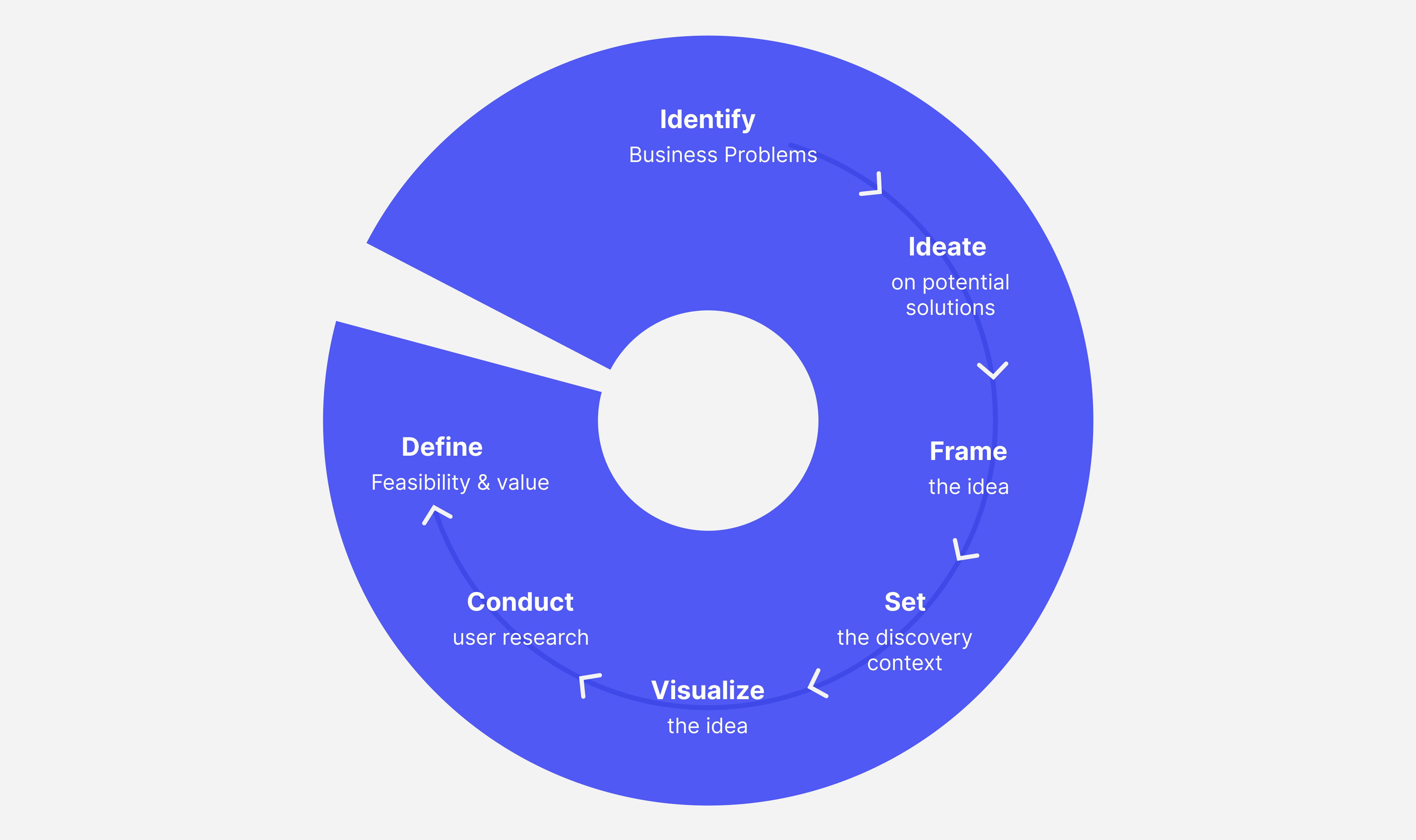
All of these stages we mentioned above, so we don't repeat.
Important thing to know:
Each team should establish a set of interviews that will be conducted at least once a week. Ideally, the team should try to run at least 2–3 interviews a week. Being able to continuously receive feedback from users is very important for a product's success. It allows the team members to empathize with the users and build a deeper understanding of them. Regardless of the number of features that the team is testing, the team should have a set of interviews that will be conducted at random times.
To involve stakeholders, project manager can use some options:
- Set a discovery demo — to demonstrate the progress of the team, problems under investigation and get feedbacks
- Set asynchronous communication — use emails, chat messages to contact any time on every stages
- Set meetings with product team
Implementation in Agile
As you may know, the Agile team creates 2-3 week sprints to deliver products. In these sprints are specific meetings to track the work process. They are usually called Planning, Grooming, Demo, and Retro. Here is an example of how the discovery framework could be incorporated within a sprint:
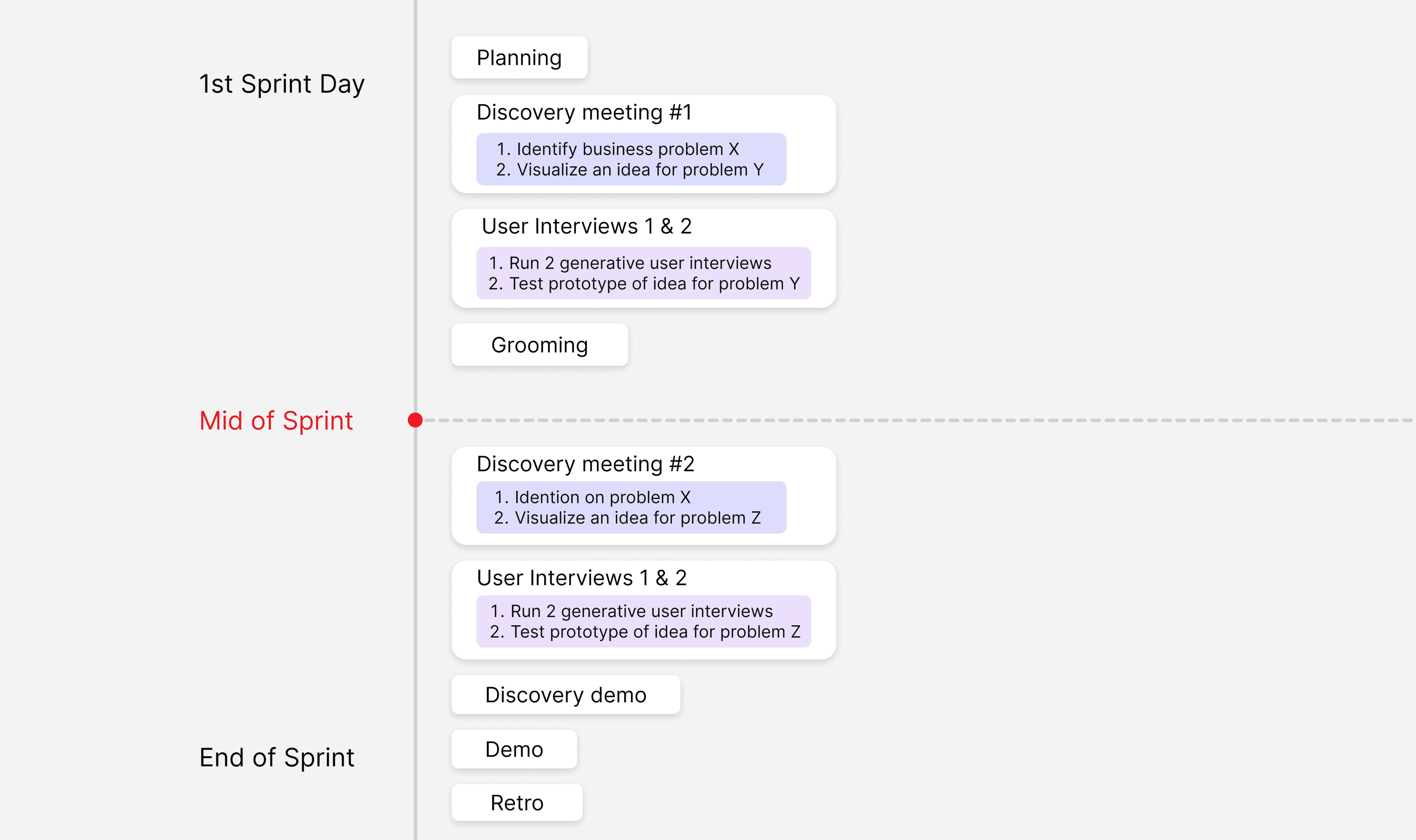
The meetings should be focused on continuous improvement and are also used to gather valuable data. So they feature frequent discussions about the current state of the product discovery cycle and how they can improve it.
The team and specifically product manager plan and arrange tasks on a quarterly basis. It can be start from 5-10 problems that will start the discovery cycle.
After the first quarter and before the planning of the next meeting, the team will have defined and evaluated those 5-10 features. The algorithm used to score them will be able to help the team prioritize the most valuable ones. There are also services/software that can assist the organization of this feature backlog and its scoring.
Depending on the team's capacity, the features that will be prioritized will be picked and implemented in the next quarter. The team's goal, the selection of these features can be expanded to include 3 or 8 new problems.
In the long run, the team will be able to identify and prioritize the most valuable features while still being able to provide useful and feasible solutions.
Moreover, teams usually have the outcomes of all the above phases in organized way. That's because the validated ideas break into clusters, have prioritizing order, and team could plan the development timelines easier.
Final thoughts
The agile product discovery process is a difficult process that involves identifying and developing a deep understanding of customers. The goal of it is to bring as much value as possible to the customer and for your business. Moreover, it helps product teams prioritize and build great products.
For a new product, the product discovery process should start as early as possible. Doing so helps gather enough data to form a strategy and develop a roadmap. Before the process begins, establish a clear goal and a team structure. Doing so helps avoid wasting time and limiting the process to a few key steps. Having the right people on board can help launch a successful product discovery process. It should also be focused on finding the right combination of people and resources.
And last but the most vital – the quality of your product discovery activities is not as important as the quantity of evidence you collect. Never forget that product discovery is to gather strong evidence that helps you make informed decisions about the product or service that you are developing.
Are you ready to launch new product? Mad Devs is here for you. Let's start product discovery process! Contact us now.

